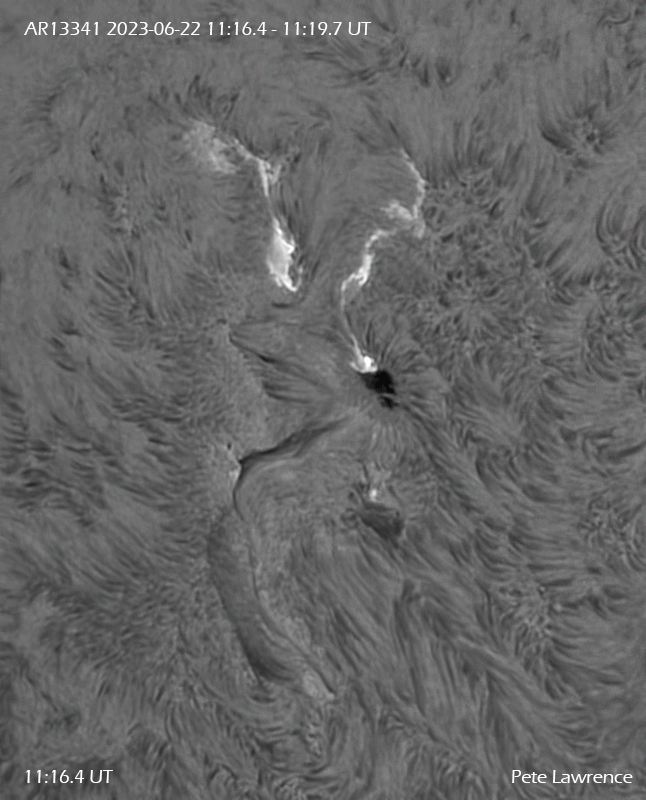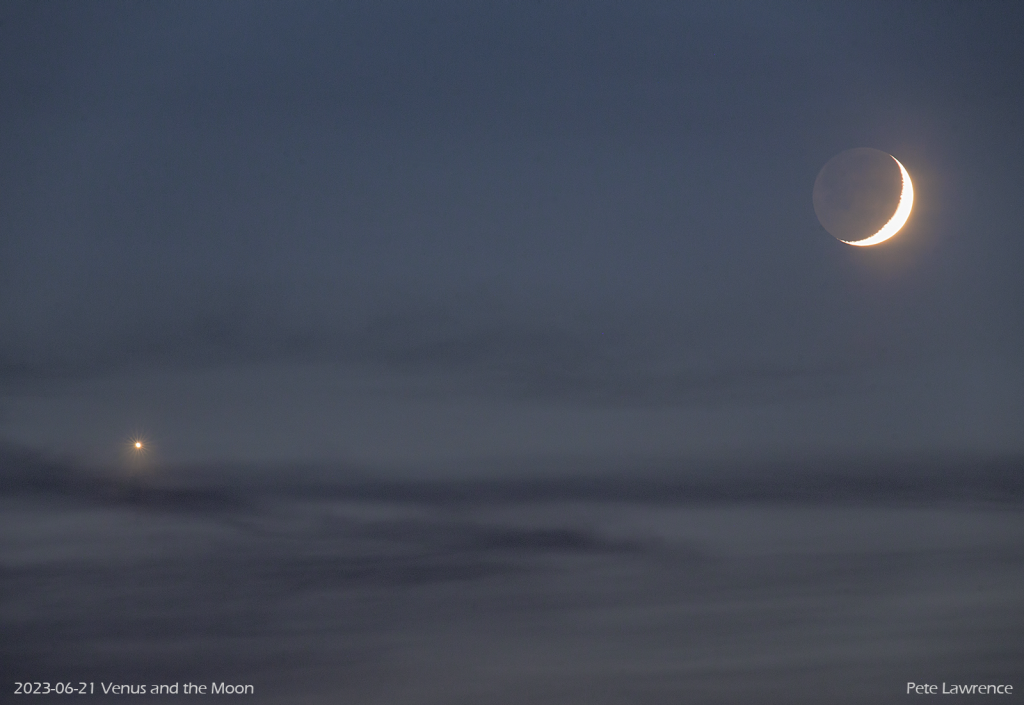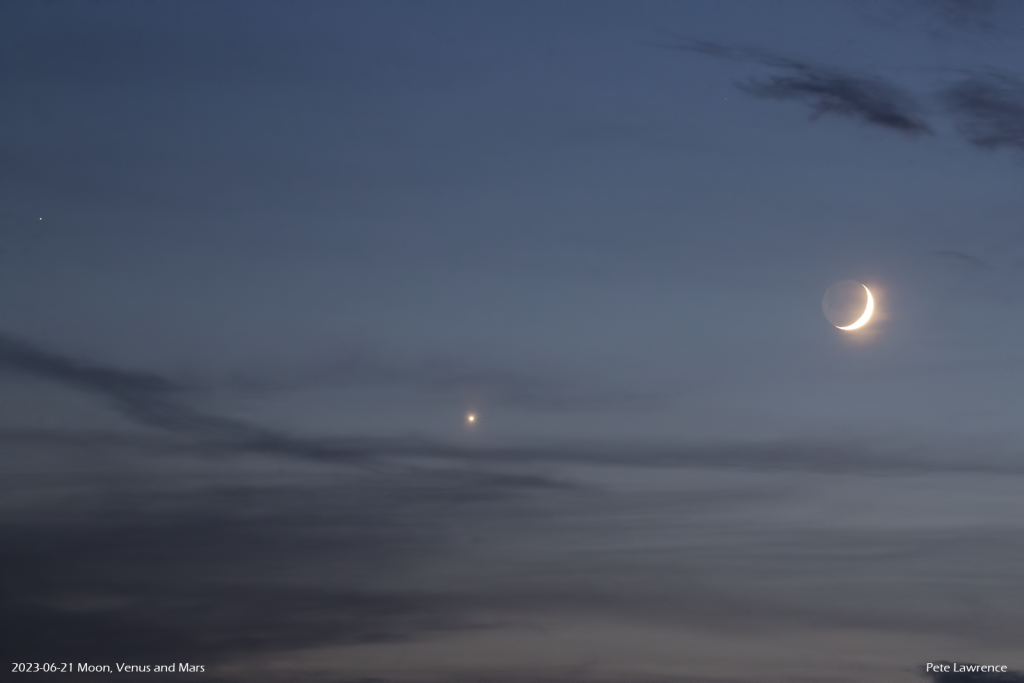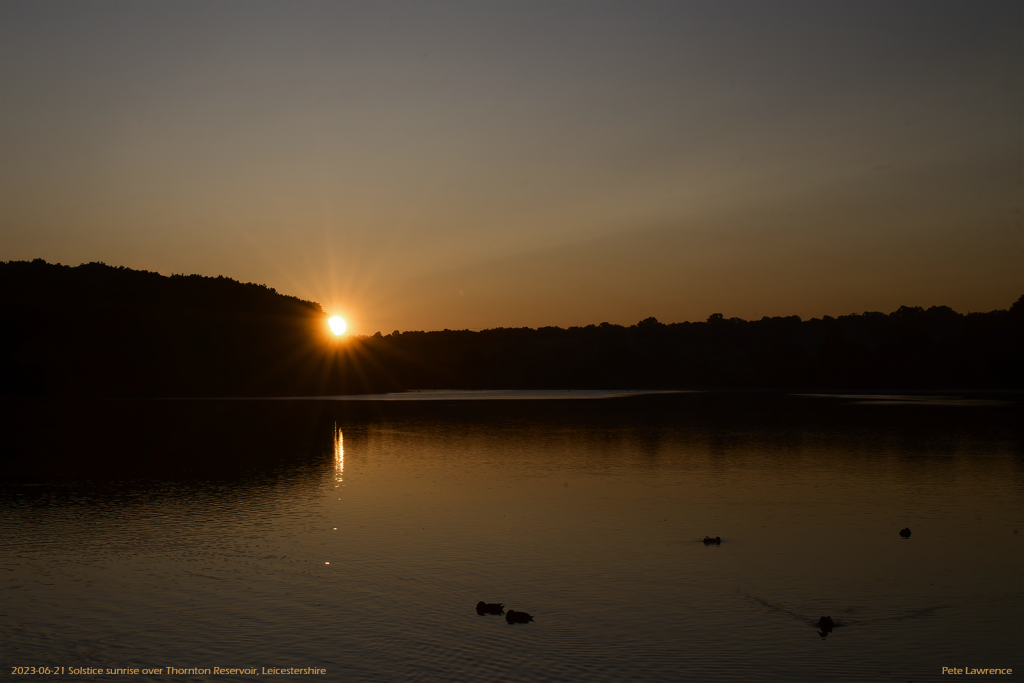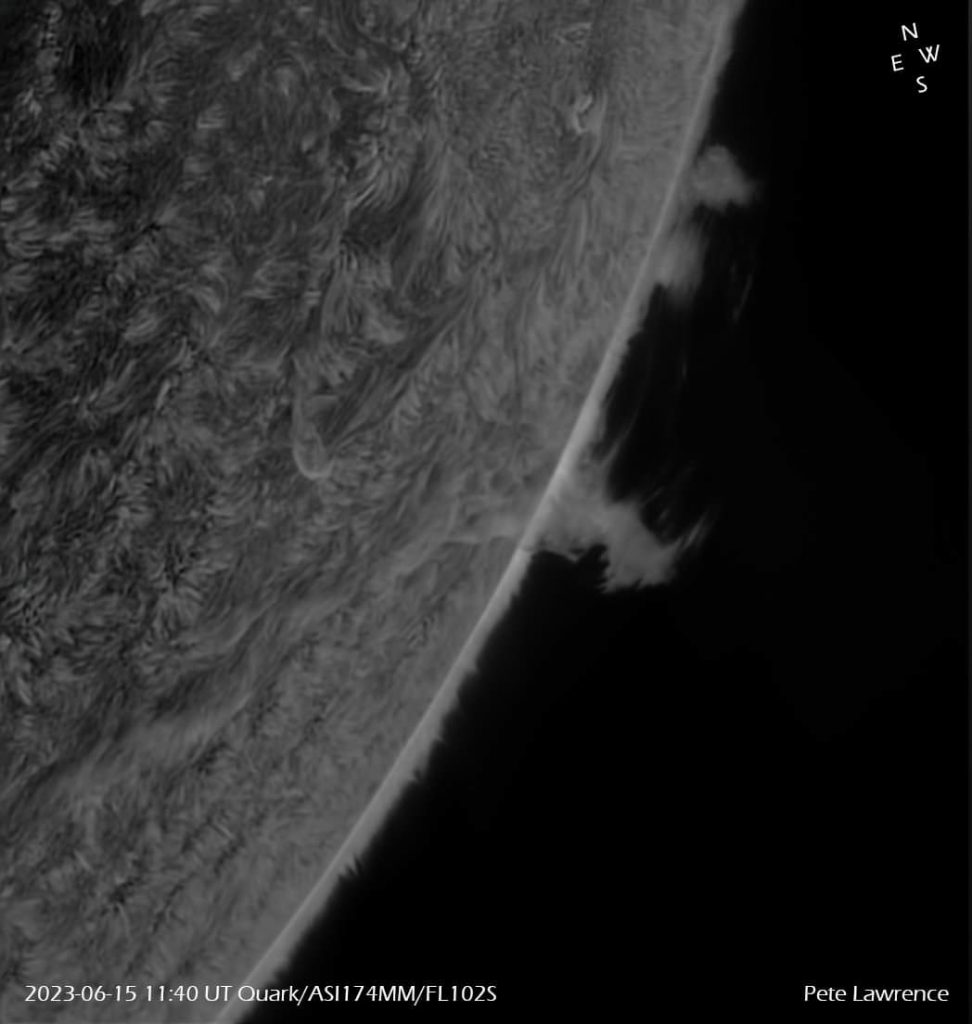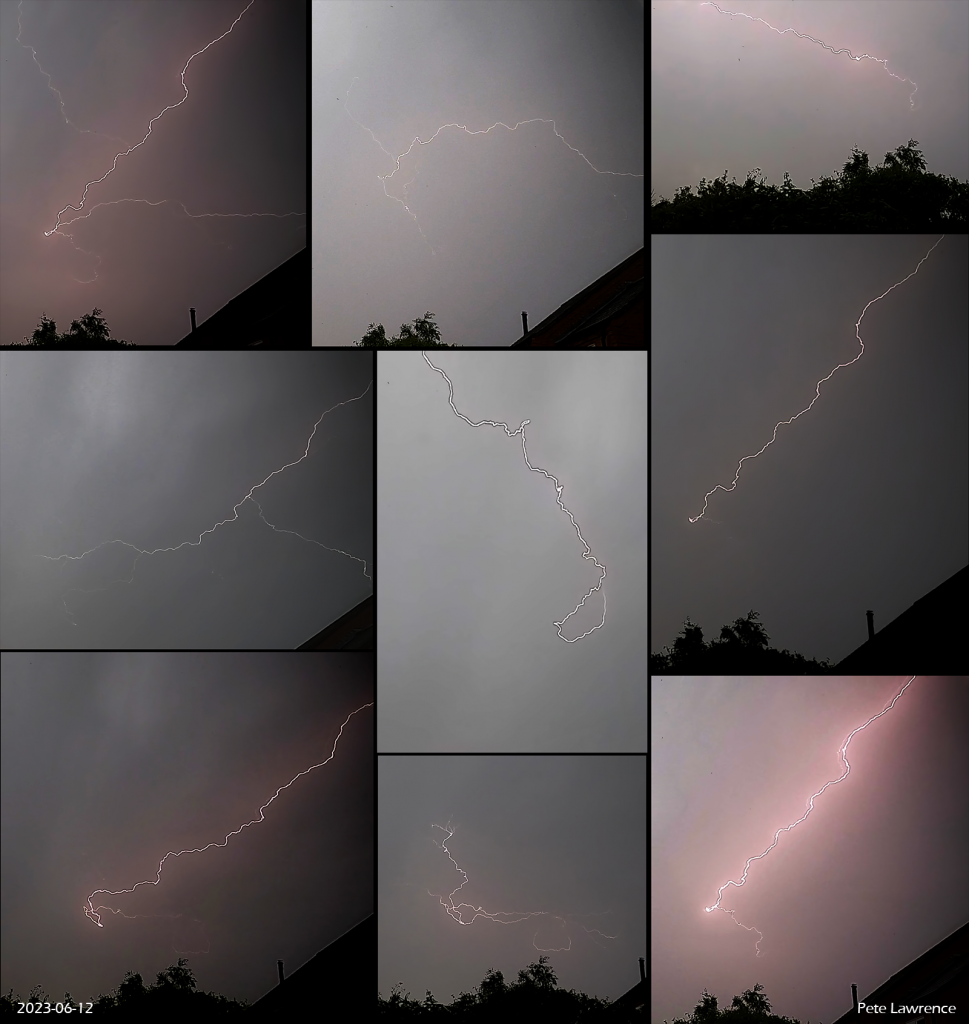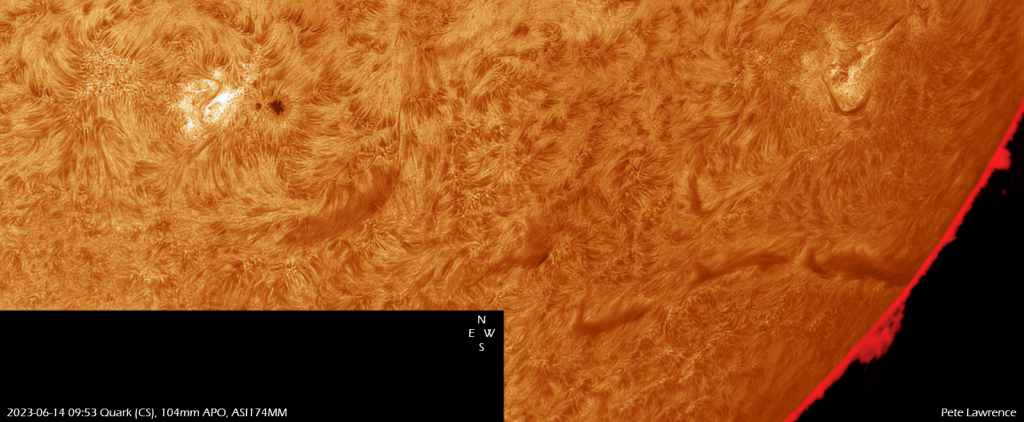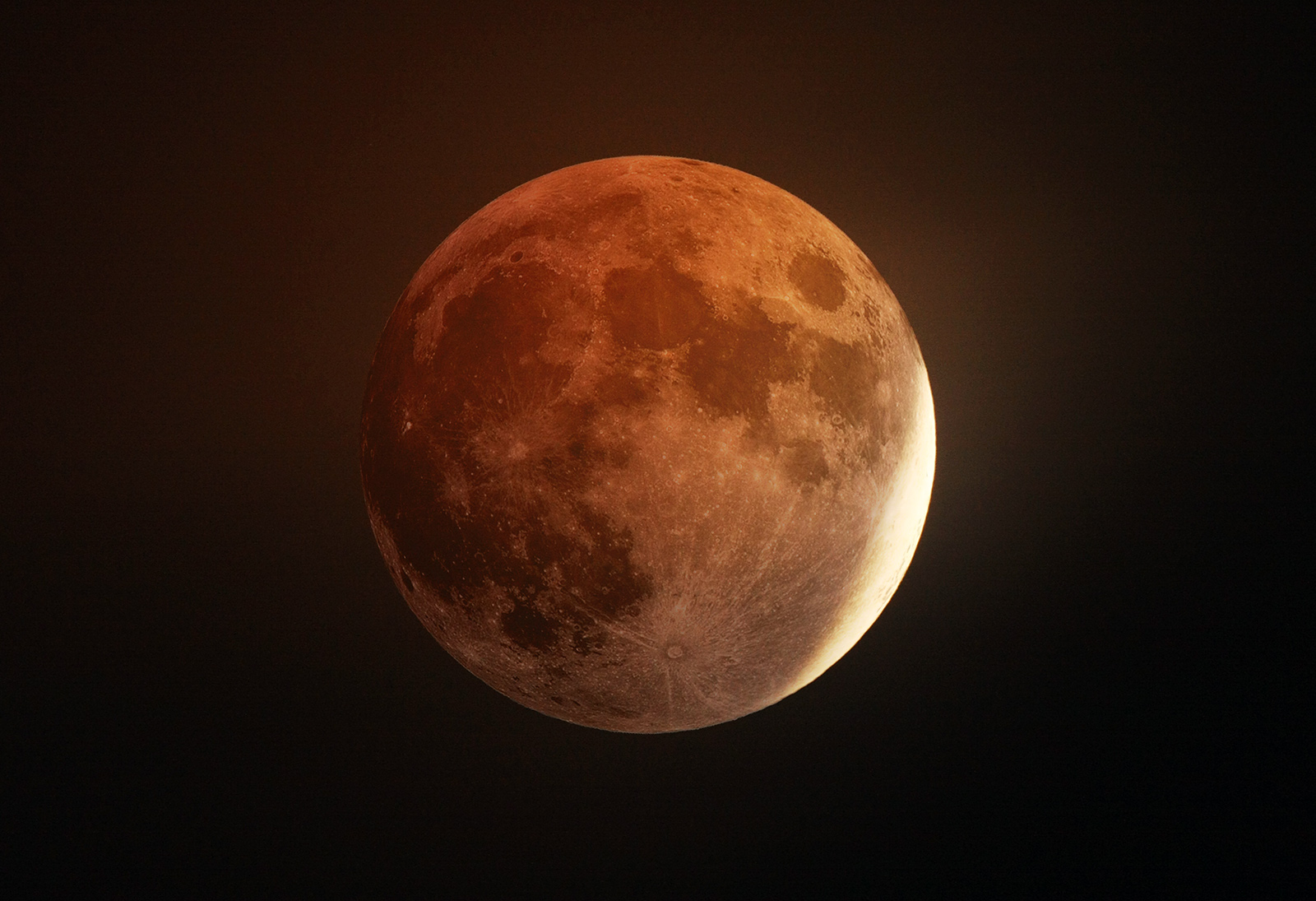
Meet AR13341, an active region (that’s what the ‘AR’ stands for) on the Sun. Imaging this today, there were extremely bright ribbons of light visible through my h-alpha filter. These were due to an in-progress flare.
Solar seeing was odd this morning – very unstable but the undulating blobs had great clarity. Unfortunately, this seeing doesn’t process that well and the image is less sharp than I would have liked. I took a number of shots of the region and the results, covering a 3.3 minute time period, are show below in a short animation. Times are shown on the image frames, an important thing to add to any solar image as feature detail can change rapidly over extremely short timescales.
